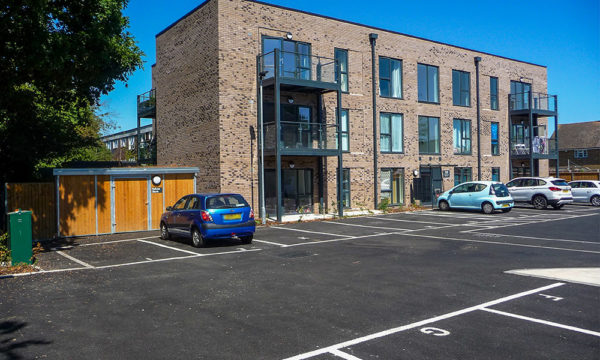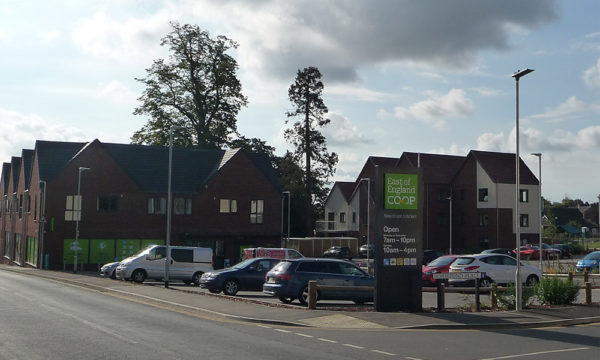Case Study Highlights
| Project | 277 Prince Avenue, Southend-on-sea, Essex |
| Client | Estuary Housing Association LTD |
| Architect | Front Architecture Limited |
| Contractor | Dove Jeffrey |
| Scope | urbanspec Green Roof H-Series External Storage for Cycle and Bin Storage |
Storage Buildings for Bicycles and Bins for New Build Homes
Estuary Housing Association own and manage over 4400 properties in the South East and place a strong emphasis on creating neighbourhoods of the highest quality. They are committed to providing high-quality housing, care and support services to meet local needs and to contribute to the ongoing development of sustainable communities.
Main contractor Dove Jeffery, specialising in the provision of private and affordable housing, worked in partnership with Estuary Housing Association on the build of 20 new homes at Prince Avenue, Southend-on-Sea, consisting of 3-bed houses and 2-bed apartments.
urbanspec was approached to deliver a package of design coordinated outdoor storage units, providing residents with secure cycle storage and housing the communal waste bins. Two urbanspec H-Series External Storage Buildings were specified with matching ForestPanel cladding and green roofs.
The first storage building offers residents a safe and secure location to store their bicycles. The 2450mm x 3750mm unit was fitted with semi-vertical bike racks, accommodating up to 12 bicycles and making the best use of the available footprint. The design of the urbanspec semi-vertical racks, means they offer both a space-efficient and cost-effective way to provide optimal bike storage in a limited space.
A second urbanspec H-Series External Storage was installed providing secure storage of the communal bins and ensuring a consistent design aesthetic for the development. The 3050mm x 4950mm building comfortably accommodates 4 1110L waste bins and was placed at the front of the apartment building with resident-only access control installed. Ensuring the communal bins are secured properly helps to avoid use by non-residents and the potential for build-up of unwanted side waste and the associated fire risk.
Both storage buildings were finished with green roofs adding biodiversity to the development and providing a natural habitat for various insects, bees and butterflies, whilst contributing to reducing the carbon footprint of the project. Green roofs help to reduce the carbon dioxide in the air with 1m2 of the green roof able to absorb up to 5kg of CO2 annually. Green roofs also help to further combat pollution by absorbing noise, heat and breaking down many other gaseous pollutants. Additionally, green roofs are a perfect way to introduce biophilic design principles to a project helping to connect building occupants more closely to nature and contributing to the health and wellbeing of residents.








